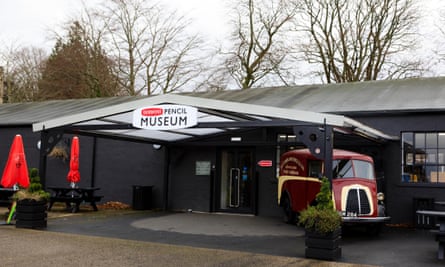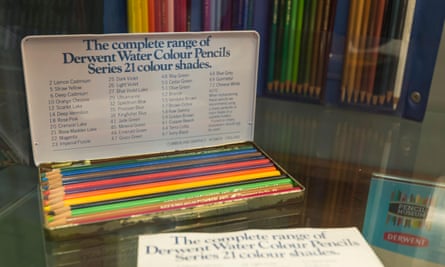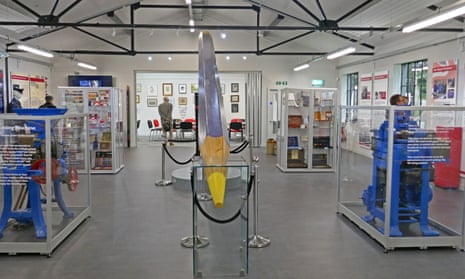In a nutshell
The ultimate rainy-day venue in one of the rainiest areas of England, this small museum already had cult status long before its starring role in the 2012 horror-comedy film Sightseers. After being damaged during Storm Desmond in December 2015, its interior has been rebuilt and is now a bright open-plan space that tells the story of Keswick’s pencil industry from its origins in the 1550s. That’s when Borrowdale shepherds are said to have discovered that the black substance clinging to the base of an upturned tree was really useful for marking their sheep. The mineral was graphite, known locally as “wad”. In the 17th century some saw it as more valuable than gold, which led to a thriving black market, centred on a Keswick pub.
Fun fact
During the second world war Keswick pencil-makers were commissioned by MI6’s Charles Fraser-Smith – the real-life Q – to design and make a secret pencil to help British airmen evade capture. The ordinary-looking pencils concealed miniature brass compasses and tightly rolled tissue-paper maps showing escape routes out of Germany.

Best thing about it
As centrepieces go, it’s not quite as “wow” as the Natural History Museum’s Blue Whale skeleton, but the 7.91-metre colouring pencil made at the Derwent Pencil Factory (which relocated from Keswick to nearby Workington in 2008) dominates the museum hall like a psychedelic missile.
What about lunch?
The new Artisan Café sells good locally roasted coffee and makes its own cakes and soup (soup with bread £5.30). However, in charging £5.65 for a cheese sandwich, £5.95 for a tuna mayo jacket potato and £4.75 for its children’s meals (including chicken nuggets and fries; sausage and chips), it faces tough competition in a town where there are several great cafes within a five-minute walk.
Exit through the gift shop?
It’s more of an art shop than a gift shop, selling artists’ graphite, charcoal, pastel and watercolour pencils made by Derwent. Colouring books for all ages range from Peter Rabbit to Game of Thrones.

Value for money?
We winced after entering through a fibreglass Borrowdale mining tunnel to discover just one room full of display boards, a few video screens and some vintage machinery (there’s also a gallery space that hosts exhibitions and community art groups). But it’s surprising how many good stories one small room can contain. The challenging quiz engaged even my friend’s teenage daughter and the drawing tables laid with pots of pencils, quality paper and how-to-draw guides welcomed all ages to sit down and lose themselves for a while. The admission price (adults £4.95, children £3.95, family 2+2 £14.50) includes a 10% cafe discount and a Derwent HB pencil (RRP £1.95) for everyone to take home.
Getting there
Keswick is about 16 miles (20 minutes) drive from junction 40 of the M6, and via the A66. Buses run hourly from Penrith rail station (X4 and X5) and take about 50 minutes to Keswick town centre.
Verdict
7/10.
It’s rather static and probably not hands-on enough to entertain younger children – some of the working machines from the original museum were lost in the flood – yet the enthusiastic, knowledgeable staff bring it alive and make it a happy place to escape the weather for an hour or two.
